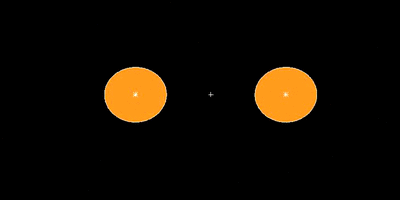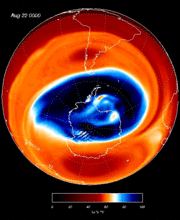With colleagues, I have been interested in simple fluid dynamics-based explanations for the occurrence of sudden stratospheric warmings (SSWs), which occur intermittently (once every two or three years) in the northern hemisphere winter polar stratosphere, as well as just once in observed history (since 1948) in the southern hemisphere. During SSWs the winter polar vortex either splits in two (a `splitting' SSW), or is displaced from the pole (a `displacement' SSW).

I am particularly interested in explanations in which SSW-like behaviour is accounted for by a nonlinear bifurcation or instability of some simple flow. The animation above shows two almost identical flows of a shallow water vortex evolving under the influence of some topographic forcing (representing the influence of the troposphere). A tiny change in the forcing of one of the flows results in a spectacular split in the vortex!

To illustrate how our idea might be relevant to the observed behaviour, the visualisation above shows the southern hemisphere stratospheric vortex during the period of the only recorded SSW in September 2002. The quantity contoured is Ertel's potential vorticity on the 800K isentropic surface (approx. 32km altitude), but any one of many chemical tracers having a gradient across the vortex edge would evolve similarly. Notice how, prior to splitting, the vortex is repeatedly elongated, roughly along the same meridian, just like in the simple model flow above.